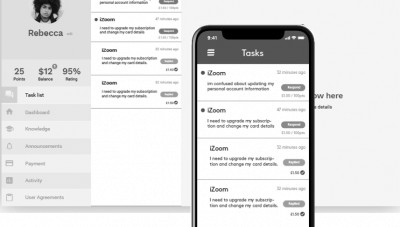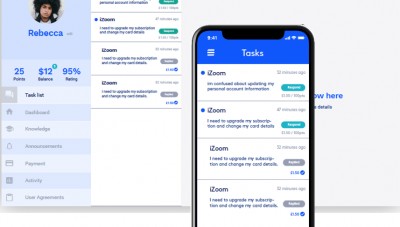Customer service staffing: Which model is right for you?
Article |

The COVID-19 pandemic radically changed customer service staffing as we knew it. With a reduced need to work, other opportunities to earn from home, and an established habit of working from home, it’s been harder than ever for contact centers to hire and keep talent.
In this article, you’ll learn how COVID-19 made contact center staffing harder and what your organization can do about it.
What is customer service staffing?
Customer service staffing is the process of finding and hiring employees to provide help and assistance to customers who have questions, want services not enabled by automation, or have run into an issue that needs assistance from a person.
Customer support staffing is very common for large B2C (Business to Customer) and B2B (Business to Business) organizations. B2B companies usually have a smaller, yet equally significant, volume of inquiries and staffing requirements.
A short history of call center hiring
Over the last 60 years, customer support staff was typically hired to work in a physical contact center or call center. Old phone systems forced call centers to have agents in physical proximity to each other, but those legacy restrictions are now gone with the massive overhaul of our voice communication infrastructure in the last 15 years.
Existing internal processes related to contact center staffing, left over from the technology limitations, meant many organizations still hired locally to a physical location.
Then COVID-19 hit, forcing companies to send their staff home on short notice to handle customer inquiries. For companies reliant on Software as a Service contact center technology, the technical side of sending agents home was quite easy. But the logistics remained a challenge for most contact centers.
A significant number of organizations changed their hiring practices to enable them to hire, train, and manage remotely. Many more did not.
To make matters worse, employee work preferences shifted drastically during COVID-19, as many people got used to working from home. The number of opportunities to work from home increased dramatically. In addition, at least in the U.S., stimulus checks meant that many people didn’t need to return to their previous occupation.
What’s the solution to post-COVID-19 hiring issues?
To overcome these post-COVID-19 hire challenges, there are several options businesses can pursue.
“Wait and see”
The American Customer Satisfaction Index reported that customer satisfaction levels have dropped by 5% since 2018.
While we may not have entered an official recession, the reality is the economy isn’t doing very well. Recent layoffs from well-known technology companies indicate we have hit a slowdown, if not a full-blown recession. This means we may see a higher demand for jobs.
With no guarantee that employees will go back to the commute grind in sufficient numbers to make the old model work as it once did, business who wait to change their hiring practices will undoubtedly continue to experience declining CSAT scores.
And there is no guarantee that employees will go back to the commute grind in sufficient numbers to make the old model work as it once did.
Revamped work-from-home staffing
Overhauling your work-from-home staffing model is a solid choice for many businesses, if they can justify the time and cost to rethink hiring, training, and managing support staff from remote locations.
With this option, there are many factors to consider, including locked-down workstations, a certification process, solid remote training programs, background checks, work-at-home environment checks, weekly employee wellness, optimized remote employee motivational programs, and more.
Co-employment
Another option is to pursue a traditional outsourcer model and let the outsourcer handle the difficult elements of managing a remote workforce. Many have implemented programs to staff for customer service remotely. However, bear in mind that there are well-established difficulties related to customer satisfaction and delivering on your brand promise with this model.
GigCX as a staffing alternative
With a GigCX model, you don’t staff employees or use a co-employment model to resolve customer service requests. Instead, you leverage a GigCX provider that allows you to engage existing brand advocates (i.e., your own customers) to help other customers on a gig basis, and you compensate them for each customer they help.
These engaged brand advocates get a completely flexible work-from-home way to earn extra money. You get a 10% lift in CSAT compared to outsourcing or traditional contact center models, less headaches around remote support staffing, and a hefty reduction in cost as a bonus.
With 2023 just around the corner, are you ready to take a closer look at how you can improve your service staffing?
Learn more about GigCX. Download our annual GigCX Report or contact us today for a demo.





